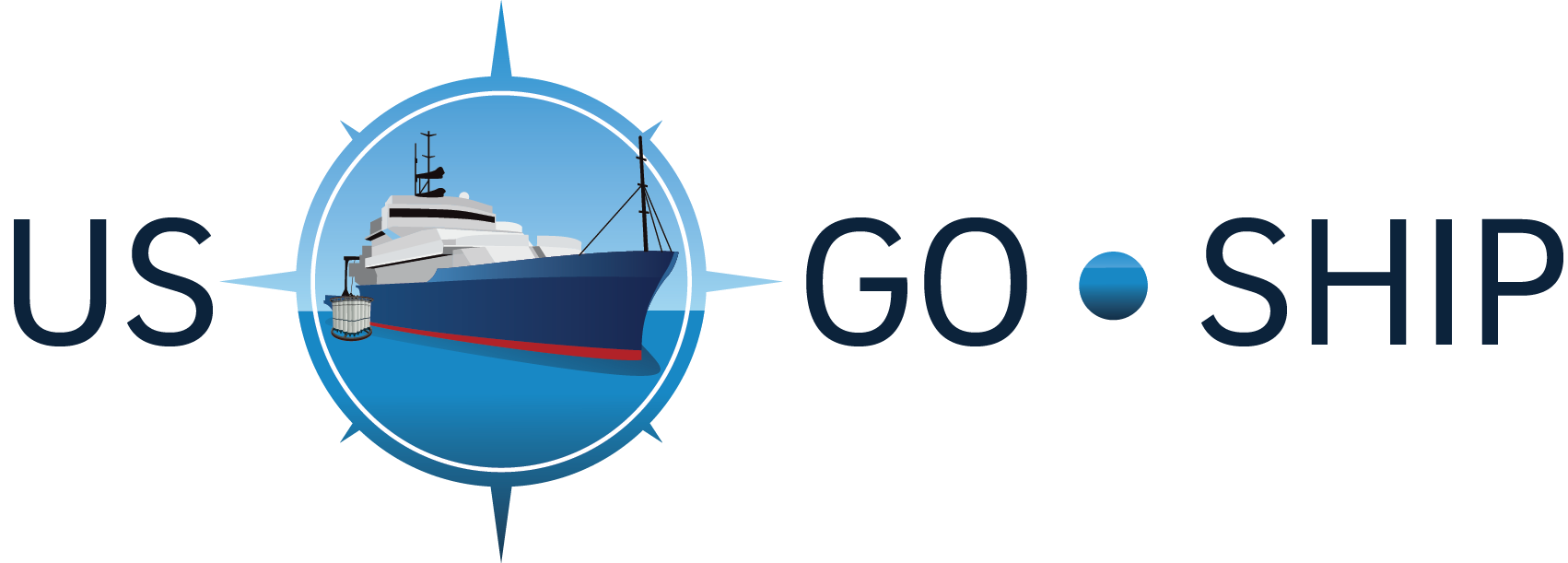From Leticia Barbero and Carmen Rodreguez **(Co-Chief Scientists)
Ahoy land-dwellers!
Greetings from the Bay of Bengal. We have now left behind the Equatorial region of
the Indian Ocean and have finished an intense sampling scheme between 3S andn3N,
with stations spaced just 20 nm apart instead of the average 30nm. We completed
20 stations in just 6 degrees of latitude. Now we are covering the so-called bow tie
section of the cruise, where the track makes a funny kind of knot around 10Nn(see
plot below). This bow-tie section covers part of the I01E GO-SHIP cruise which
was last occupied in 1995 but not again. During the I09N 2007 cruise, sections of the
I01E track were also sampled, and we are repeating this track, going as far west as
international waters will allow. The Bay of Bengal is an important source of fresh
water to the global ocean and these stations are useful for estimating freshwater
transports and budgets, among other things. The stations further west also have
interesting carbon and nutrient concentrations, particularly in deep waters.
We are beginning to see some animals out there, finally. Still no sign of a whale yet,
but some of us have seen the odd turtle, a small shark, and a school of dolphins
splashing in the distance. To compensate for the lack of exciting fauna, the Indian
Ocean is providing us with a non-stop series of amazing sunrises, sunsets and starry
skies, as well as ongoing calm seas.
For those of us who have not worked in the Indian Ocean before, the oxygen values
we are seeing have been a surprise. Starting at around 10S, subsurface values began
to drop significantly and we have actually measured O2 values as low as 10 μmol/kg,
compared to values of ~200 μmol/kg at the same depths in our first stations. This
means that subsurface waters in this area are highly hypoxic, and close to the
suboxic range (concentrations lower than 5 μmol/kg). In the suboxic range most
organisms cannot survive. Similarly low O2 concentrations had been measured in
this area in previous cruises so this is not a dramatic change that occurred in the last
decade.
On this week’s report we also wanted to talk a little about the LADCP (Lowered
Acoustic Doppler Current Profiler) measurements. The LADCP is installed on the
rosette and provides zonal as well as meridional current velocities. These currents
are important not only for physical oceanographers, but also for researchers
working with nutrients and carbon, because knowing them helps scientists in
determining nutrient distribution and transports.
Our LADCP scientists on board and back on land, Takaya Uchida and Andreas
Thurnherr, have summarized the main results from the LADCP records so far:
1) There are strong currents along the Diamantina Escarpment (southern flank of
Broken Plateau, near 30S) essentially all the way to abyssal depths. From this single
occupation it is not clear whether the northwestward flow along the Diamantina
Escarpment is part of the mean circulation or if it is a transitory feature. The flow
above the topography crosses the plateau in a southwesterly direction; the flow
below the crest depth appears to flow along the topography (probably because of PV
conservation). Based on this observation we hypothesize that the southern limit of
the high-EKE (Eddy Kinetic Energy) wedge seen in the figures below is set by the
topography.
2) The strong currents associated with the Diamantina Escarpment are associated
with significant turbulence and mixing. Based on the VKE (Vertical Kinetic Energy)
parameterization the turbulence levels around the Broken Plateau are similar to the
turbulence levels in the ACC region, although they do not extend above 1000m.
3) The VKE-derived turbulence levels under the entire region of high surface EKE
(roughly 17-30S) are elevated across the entire water depth.
The zonal equatorial undercurrents between the latitudinal bands of 5S~5N which
are specific features in the equatorial regions can also be clearly observed.
As always, here are the links to our blogs for those of you who want to
learn more about what’s going on in our cruise:
Onwards!
Carmen and Leticia, chief-scientists I09N
